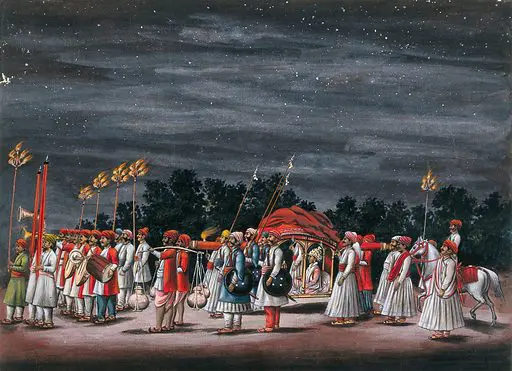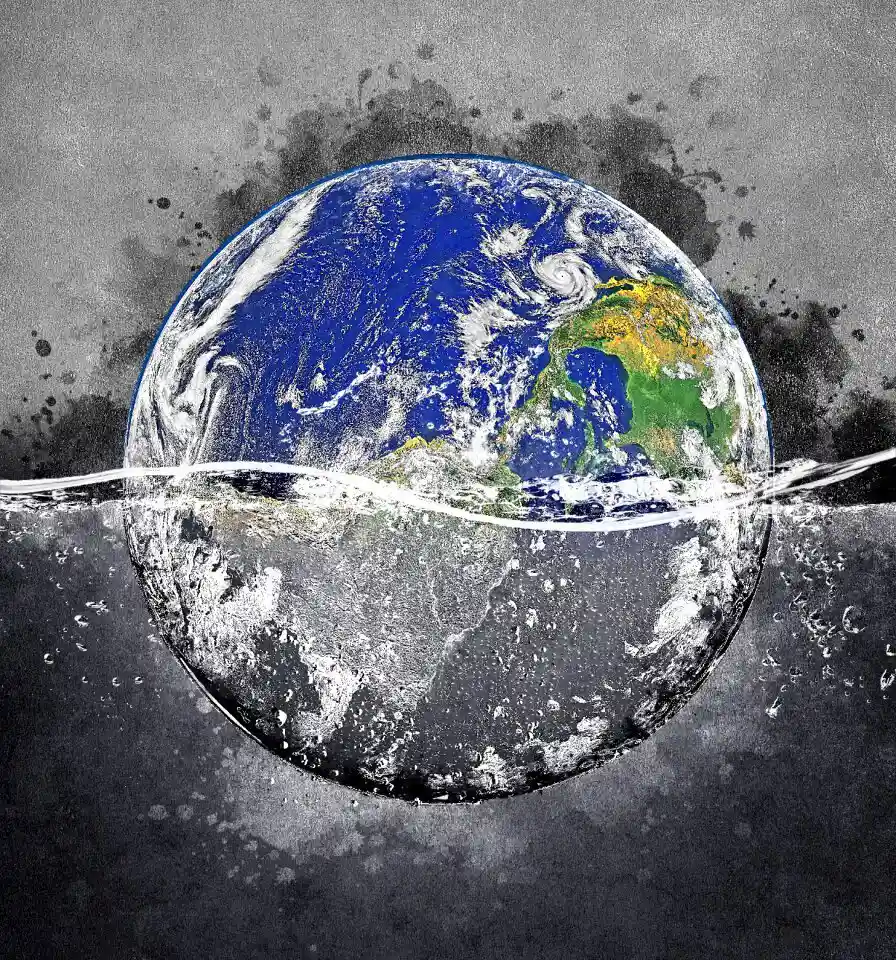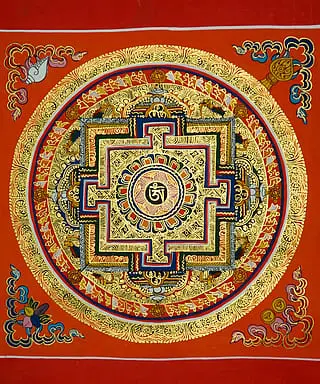
share this article
To pick up where we left off, in Marriage as an Institution of Sacrifice: let us continue to examine it’s various layers. Marriage is known in Vaidika Saṃskṛti as vivāha: a key stage in life, and a crucial pillar of society in the dhārmika civilizational worldview.
Vivāha, from √vaḥ dhātu in Saṃskṛt, for “to bear”, “to carry”. Those going through vivāha saṃskāra must learn to carry the responsibility of supporting each other and those around them.

In our previous discussion, the following was highlighted:
The family unit creates guided journeys for self-evolution while making space for fulfillment of our desires. It creates order in chaos. Thus, marriage is the bedrock of civilization, which is a much grander yajña - a much grander order in much grander chaos.
What is this guided journey all about?
The kṣetra on which this journey takes place, in this context the ‘fieldmap’, includes three key players:
- Jīva
- Jagat
- Īśvara
This fieldmap at once encompasses both individual and the collective, vyaṣṭi and samaṣṭi, the microcosm and macrocosm. It by default provides a holistic, comprehensive, and integrated outlook on the journey to be taken by each individual, within the collective environment in which that individual is placed.
This field map also, by default, respects and even reveres all three players. Jīva, jagat, and Īśvara are each entities to be acknowledged and accounted for, unlike the Abrahamic worldview where jīva may be callously understood as ‘soul’1, Īśvara unfairly equated to a male God in Heaven, and jagat completely disregarded. That jagat which is the environment in which the jīva lives - the planet, Earth, which is also itself a living, revered Being - is written off as a thing to be consumed, in the Abrahamic worldviews.
Therefore in such worldviews, by definition the concept of sustainability, harmony, and coexistence between the individual and the collective are outside the purview of general awareness, if not added on later as an afterthought.

The outlook in Vaidika Saṃskṛti - with jīva, jagat, and Īśvara - provides a more holistic, comprehensive, and integrated worldview with the concepts of freedom, happiness, harmony, and surplus, powering their core.
Let us delve into these three entities a bit more. At the ultimate level, what are they? How does this highest outlook translate and trickle down into Vaidika Saṃskṛti, to shape the guided journey we can choose to take?
Jīva, the individual Consciousness, is none other than the Supreme Self waiting to recognize His/Her own true nature. That which brings us to the Vision of Oneness, taking us (away) from Divisions and (which) establishes us in nothing less than “One Undivided Supreme Reality”. We are not different individuals searching for Truth - but we are essentially the TRUTH lost in divisions2.
Each jīvātma is born into the world according to karma - a much larger, vaster, encoded system. The exact latitude and longitude coordinates of birth; the exact moment in microseconds within our relative record of time; the family of parents, siblings, grandparents, aunts and uncles (or lack thereof) which this jīva now identifies with - all these are according to that airtight coding of sañcita, prārabdha, and āgāmi karma which that specific jīvātma shall journey through.
Of course, not every single thing is preordained. Each jīvātma has the choice of pursuing their own puruśārtha. The choice to pursue or not to pursue, what to pursue, how to pursue, when to pursue, and so on and so forth. This puruśārtha, however, does function within the given cards dealt by the hand known as prārabdha karma. Choices are made, each with their own consequences that play out, determining the next set of options which the jīvātma will have to choose from.
All this happens within the environment, the spatio-temporal setting, known as jagat:
The Jagat is verily the expression and expansion of that “One Undivided Supreme Reality”. We respect this as Mother Nature. What we reap from Nature is the blessings of this Divine Mother - who essentially is (the) inseparable aspect of Īśvara, Bhagvān (the Supreme with attributes). So there is no aggrandizing, snatching or hoarding this nature. We respect Nature and she nurtures us2.
Jagat is an objective, external, material real world that each of us jīvas experiences subjectively. The same jagat experienced by a child in Bhārat may be much more rich, colorful, and diverse than that jagat experienced by a 45-year-old in France. Indeed, jagat experienced today by a given jīva may even be very different from that same jagat experienced by the same jīva tomorrow.
Aside from these two, and in fact correlating to both of them - is Īśvara. A macrocosmic, collective reflection of the same individual Consciousness, no different from jagat itself as well.
Īśvara is the Supreme Self with all the attributes (saguṇa) and is the embodiment of the collective Consciousness. It is this Īśvara who decides the Karma-Phala. He is therefore also called Karma-Phala-Dātā. As the initial Sādhakas (Spiritual Seekers), we invoke his presence and blessings, in and through every aspect of life2.
To find balance, integration, and harmony amongst these three dimensions is our civilizational heritage. It is our dharma, our responsibility. That which we carry and bear.

The Guided Journey of Four Āśramas
Here we understand the four stages, the four āśramas of Vaidika Saṃskṛti, our civilizational tradition. These four āśramas are a part of the guided journey that smoothly, more efficiently, and seamlessly integrates the three players on the kṣetra.
Stage One: Brahmacarya Āśrama.
From conception, gestation, and birth to about age twenty five, the jīva goes through the rigorous, foundationally crucial process of knowledge-absorption. He or she is nurtured with the physical (biological) and subtle (mental, emotional, intellectual) saṃskāras that will help them navigate through the remaining three stages.
Stage Two: Gṛhastha Āśrama.
From vivāha saṃskāra until one sees the face of their first grandchild, the jīva carries the weight of responsibility - not only of themself, their spouse, and children, but also of the extended family of parents, grandparents, great-grandparents, lineage of ancestors, and the rest of society at large. This responsibility takes various shapes and forms: financial responsibility, physical responsibility, emotional responsibility, multiple layers of civic responsibility, and more.
This Āśrama alone - the only one out of the four - bears the earning capacity, wealth generation, and creation of surplus for the other three āśramas, and for itself. The gṛhasthas alone provide food sustenance and nourishment, physical shelter and comfort, and economic vigor, which in turn upholds all the other āśramas’ ability to function.
This stage of life, as per Vaidika injunction, is typically for the jīva between twenty-five to fifty years of age.
Stage Three: Vānaprastha Āśrama.
Starting at the moment one sees the face of their first grandchild, a process of gradual withdrawal from family duties and civic responsibility takes place. This is the time to prepare for the next and final stage, which typically occurs between fifty to seventy-five years of age.
Stage Four: Saṃnyāsa Āśrama.
The final stage, where the jīvātma renounces all individual ties at the altar of the Highest, to focus on the ultimate pursuit of mokṣa. This is between seventy-five to hundred years of age, for those who have followed through the guided journey of these four stages.

The Purpose of The Guided Journey
Going back to jīva, jagat, Īśvara - the purpose of this guided journey through the four āśramas is clear: Dissolve the existing account of karma being carried by the jīvātma, in a healthy and sustainable way, such that -
आत्मनो मोक्षाय जगत् हिताय च |
ātmano mokṣāya jagat hitāya ca
The jīvātma is freed from the limitations of individual-ness and benefits the world around them, in the process.
An initial step to overcoming the boundary of the individual, the first step to expanding one’s identity past the physical and emotional barriers of the self - presents itself in this guided journey with the physical, emotional, and more subtle bond of marriage - vivāha yagña.
“Through the yajña of marriage as a sacred institution, two individuals coming together for this co-creative process transcend their individuality, their physical and emotional identities. One evolves from the limited individual sense of self to incorporate, integrate, and co-bear his/her partner self, which has its own distinct and unique limited sense of self. Both individuals grow and mature through this process, dissolving their initial limited sense of identity, developing and expanding to accommodate another being. This is the first step.
Then, these two individuals evolve by bringing into the world their offspring.
A two way process occurs where biological, emotional, psychological and social desires are fulfilled alongside a pertinent sacrifice of narrowness of identities and one’s lower nature or animal instincts. This is a transaction, an evolution, in accordance with nature’s rule and rhythm - a yajña.”3
Within the Guided Journey: Offspring & Timing
Expansion of the individual identity. It happens formally with vivāha, then again in a uniquely parallel way with garbhādhāna. The journey of conception, gestation, birth, growth, maturation - the entire journey is not only development of the child, but also development of the parents. For the parents the growth ideally is in terms of emotional, mental, intellectual, character building, gaining of patience, maturity, grit, and resilience.
The exact child comes to the exact pair of parents, also based on the karma accounts of each. The physical and non-physical attributes of the individuals as well as the precise experiences which they end up putting each other through: from their daily mundane interactions with each other, as well as from their life-changing, majorly impacting, landmark decisions that impact themselves and their families.
All of these experiences - the friction created between the family members, the support provided throughout these frictions to each other - in the Hindu civilizational world view, all of these are part and parcel of the larger picture of growth and harmony. An integration of the individual with the collective.
When these take place at the suggested times within the jīvātma’s biological lifespan - it contributes to the health and sustenance of not only that jīvātma, but the society and environment around it as well. Thus the culture of beginning to have children before thirty, rather than after.
The Civilizational War at Hand
Whereas, what we see today is a disintegration of all of these values, due to an active war on Vaidika Saṃskṛti:
- Weakening of the physical body due to lifestyle choices (food, sleep, living arrangements, even clothing, daily activities and lifestyle changes, a definite lack of nitya karma)
- Weakening of the subtle body (mind, intellect, memory, sense of I-ness) due to cultural degradation, devaluation of dhārmika heritage, and an adulterated sense of identity
- Late marriages (if at all), increased divorce rates
- Late child-bearing (if at all, and less in number), increased health issues for parents and children
Such destruction of Hindu civilizational tradition, heritage, and thought-systems is not only stifling of the Hindu identity - but also will eventually contribute to an implosion of the society itself. A complete blackhole of chaos, which no longer has its own rhymes and rhythms of order.
With the annihilation of ātmano mokṣāya jagat hitāya ca, obviously comes the dismantling of social harmony and ecological integration, leading to an ultimately inevitable self-sabotage of the human race.
The need for a sense of śatrubodh and svayambodh is clear in light of these arguments. The pressing urgency for a clear sense of identity, and that clarity leading to confidence as an individual and finally that confident individual then undertaking courageous actions to impact the collective. This is what we must all engage with.
The current discussion around marriage, vivāha samskāra, should be positioned in light of these larger battles and wars being fought.
Endnotes :
The abrahamic concept of “soul” is distinct from the concept of jīva or jīvātma. Using “soul” as a translation, oversimplifies the concept of jīva and therefore propagates misconceptions and wrong understanding of Vaidika Saṃskṛti. A soul, in the Abrahamic sense, has one life on Earth, after which it is either condemned to Hell or promoted to Heaven. Only human beings have souls, and in many Abrahamic contexts - only white, human males. There is no scope for punarjanma, the cycle of birth and death through a variety of yonis, or sañcita/prārabdha/āgāmi karma, to name a few basics which frame the concept of jīva in Vaidika Samṣkrti.
Quotations from Swami Sarveshānanda Sarasvati.
Quoted paragraphs taken from Part 1 of this Article Series, Marriage: The Institution of Sacrifice.